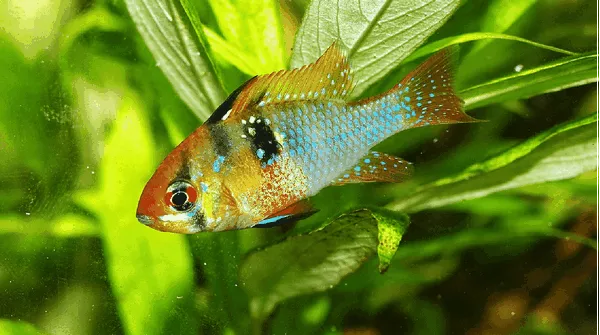Ram cichlids, also known as Mikrogeophagus ramirezi or simply rams, are a popular species of freshwater fish that are native to the Orinoco River basin in South America. These small, colorful fish are prized by aquarists for their striking appearance, peaceful temperament, and interesting behavior. However, in order to keep ram cichlids healthy and thriving in captivity, it is important to provide them with the right substrate in their aquarium. In this article, we will discuss the best substrate options for ram cichlids and why they are important for the fish’s well-being.
First, let’s define what substrate is. Substrate is the material that is placed at the bottom of an aquarium. It can be made of a variety of materials, including gravel, sand, or even specialized substrates made from clay or crushed coral. The substrate serves several important functions in an aquarium, including providing a surface for beneficial bacteria to grow, creating a natural habitat for fish, and helping to anchor plants.
When it comes to choosing a substrate for ram cichlids, there are several factors to consider. Ram cichlids are a species that naturally inhabits shallow, slow-moving waters in South America, which means they prefer a substrate that is fine-grained and soft. Here are some of the best substrate options for ram cichlids:
- Sand – Sand is an excellent substrate choice for ram cichlids because it is soft and fine-grained. Ram cichlids like to sift through the sand looking for food, and they also like to dig small pits in the substrate to use as spawning sites. Sand also provides a natural look to the aquarium and can be used to anchor live plants.
- Fine-grained gravel – Gravel is another good substrate option for ram cichlids, as long as it is fine-grained and not too rough. Rough gravel can scratch the fish’s delicate skin and fins, leading to infections or injuries. Fine-grained gravel can also be used to anchor live plants and provides a natural look to the aquarium.
- Crushed coral – Crushed coral is a specialized substrate made from crushed coral skeletons. It is a popular choice for cichlid aquariums because it raises the pH and hardness of the water, which is beneficial for many cichlid species. Ram cichlids can also benefit from crushed coral substrate, as long as it is not too rough or abrasive.
- Aquasoils – Aquasoils are specialized substrates made from clay or other minerals that are designed to mimic the natural environment of certain fish species. They are rich in nutrients and can be used to anchor plants, but they can also be expensive and require special care to maintain.
No matter what substrate option you choose, it is important to ensure that the substrate is thoroughly cleaned and rinsed before adding it to the aquarium. This will help to remove any dust, debris, or other contaminants that could harm the fish. It is also important to avoid using substrates that are sharp, rough, or abrasive, as these can scratch or injure the fish.
In addition to choosing the right substrate, it is important to maintain the substrate properly in order to ensure the health of the fish. This includes regular vacuuming to remove debris and waste, as well as occasional stirring or raking of the substrate to prevent pockets of anaerobic bacteria from forming.
In conclusion, choosing the right substrate for ram cichlids is an important part of creating a healthy and thriving aquarium. Sand and fine-grained gravel are good options for providing a soft, natural substrate that allows the fish to sift and dig. Crushed coral can also be beneficial, but care must be taken to avoid using rough or abrasive substr

























